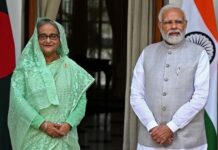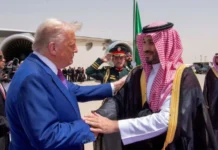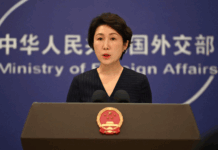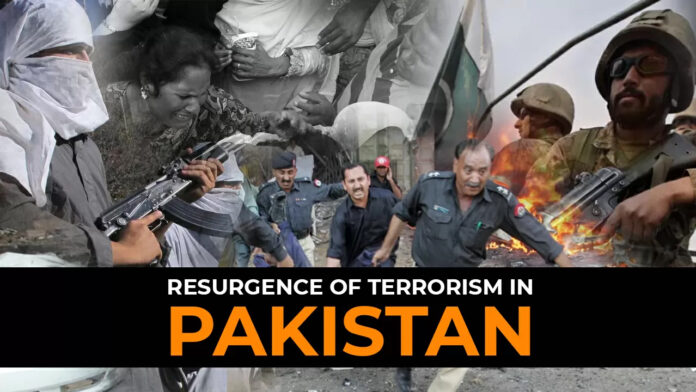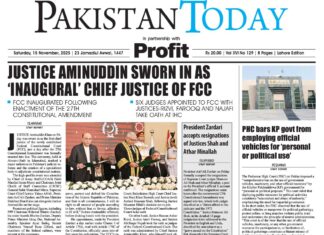January 20 proved to be a horrible day for the nation as a suicide bomber detonated an explosive device in a packed mosque in Peshawar. A faction of TTP, namely Jamaat-ul-Ahraar claimed responsibility. However, a little later the central group of TTP rejected the claim. This rejection is perceived as a mere distraction. The atrocious terrorist attack is thought to be a successful bid to avenge the death of TTP leader Umar Khalid Khorasani.
Preliminary investigations have brought to light that 10 to 12 kg of explosive material was used. A day after this heinous attack on a mosque, TTP militants raided a police station in the Mianwali district of Punjab. Both incidents show that terrorism is making a comeback in Pakistan. The terrorist attacks kept pace, following the TTP’s move to call off the ceasefire in November. This ceasefire worked for a few months. The TTP’s reluctance to show any flexibility on its demand for the reversal of the FATA merger and to disarm itself paved the way for the failure of negotiations.
2022 witnessed a sequence of terror attacks. According to the annual security report by the Center for Research & Security Studies (CRSS), ‘Five hundred and six terror attacks & counter-attacks occurred across the country in 2022. Three hundred and ten attacks occurred only in Khyber Pakhtunkhwa and newly merged tribal areas. It means KP faced 62 percent of total attacks. Balochistan with 110 attacks proved to be the second most insecure and vulnerable province. The province of Sindh saw 54 attacks and counter-attacks. Shockingly, Pakistan witnessed 42 attacks per month in 2022. KP being at the top of the terrorists’ list witnessed a surge of 108 percent in the number of attacks. The most distressing fact is that civilians, security personnel, and government officials were 62 percent of the total fatalities. On the other hand, terrorists or insurgents were 38 percent of the total fatalities. We have three main terror groups that target Pakistan: ISKP, TTP, and BLA. Surprisingly, they took the responsibility for only 57 strikes. In terms of areas, Bannu, Lakki Marwat, and North Waziristan were hit the hardest. ’
Furthermore, it would be pertinent to identify the factors which led to the resurgence of terrorism in Pakistan. Different analysts and experts have different reasons to offer. A research fellow at the S. Rajaratnam School of International Studies, Abdul Basit in his thought-provoking article titled “The Resurgence of Terrorism in Pakistan” put forth four important points: Afghan policy, negotiations, intergroup mergers and alliances, and inadequate infrastructure. These four points would provide us with a framework to analyze factors that contributed to the existing turbulent circumstances. First, we talk about the ‘Afghan Policy’. There is no doubt in this that Pakistan’s Afghan policy has backfired. Some overblown expectations led to a myopic Afghan policy: a) Pakistan wanted to corner India by curtailing the latter’s influence in Afghanistan on one hand and by cutting its link with TTP on the other hand. b) Pakistan wanted to maintain its influence over Afghan Taliban and c) Pakistan wanted Afghan Taliban to crack down on TTP militants or to pressurize the latter to soften their demands.
When the Taliban came to power, various political pundits were predicting that Pakistan, China, and Afghanistan would ally. Russia could also be part of this. None of these objectives has been achieved because every objective is inextricably linked with peace. Peace, in turn, is directly linked to controlling TTP.
The Afghan Taliban’s ascent to power has rejuvenated the TTP. It has infused a new spirit in TTP and has upped its morale. TTP leaders may think that if Afghan Taliban can achieve their desired goals,so can they. To Pakistan’s chagrin, Afghan Taliban neither took stern action against the TTP nor barred it from conducting terrorist attacks in Pakistan.
Why do the Afghan Taliban not take any action? There may be several reasons: a) TTP helped the Afghan Taliban against the USA. That is why the Afghan Taliban are mothering the TTP. The Afghan Taliban’s flexibility towards the TTP makes the latter more operative and effective. b) Another important view is that the Afghan Taliban can use the TTP as a tool of strategic autonomy against Pakistan’s security establishment. In simple words, the Afghan Taliban want to reduce their reliance on Pakistan. Islamabad’s leverage over the Afghan Taliban has considerably reduced now. c) Afghan Taliban need TTP fighters for their mutual enemy: ISKP. ISKP has a different ideology and it is an aspirant of a greater Islamic State including Pakistan and Afghanistan.
Bearing in mind the above-mentioned points, it is as Dr Naazir Mahmood says, ‘the distinction between good and bad Taliban has evaporated in the thin air’. The good Taliban (Afghan) and Bad Taliban (TTP ) both are involved in boring holes in the border fence, on which Pakistan spent more than $500 million. Those Pakistani people and analysts who were celebrating the Taliban’s victory are regretting their euphoric feelings.
Our Afghan policy and excessive expectations have achieved nothing remarkable. We have to revisit our Afghan policy. Pakistan must understand that Afghan Taliban will never crackdown against TTP because both are two sides of one coin.
Palpably, India and the Afghan Taliban are inching closer as Indian Finance Minister Nirmala Sitharaman has recently proposed a $25 million development aid package for Afghanistan in the Union Budget. Taliban spokesman Sohail Shaheen has welcomed the development and remarked that it would make the relations between the two nations better. India has already given de facto recognition to the Afghan Taliban government.
The second point is negotiations. The policy of negotiating with TTP could not work in favor of Pakistan. It was an ill-advised move that strengthened the position of the TTP and gave it much-needed time to expand in Pakistan. According to NACTA (National Counter-Terrorism Authority), ‘TTP used the time of peace talks to bolster up its position. In the time of negotiations, a surge in TTP’s attacks was also witnessed’.
If history is taken as a guide, it would be clear that negotiation is not a solution. Pakistan and TTP concluded more than five peace deals but none of them achieved peace. Various experts, civil servants, and former army officers opposed the option of negotiations. Shaukat Javed, the former IGHP Punjab, writes “The history of talks with the terrorists proves that it only works for them. They get legitimacy, space, and strength. Pakistani authorities gave the impression that they were tired of the fighting because of their unsolicited willingness to negotiate”. Some retired army officers like Gen (Rtd) Tariq Khan think that we don’t need any peace deal with TTP since we have defeated it.
The third point is ‘inter-group mergers and alliances’. Alliances make terrorist groups invincible and enhance their capacity to fight. TTP under the stewardship of Nur Wali Mehsud is investing much energy and attention to reunite the splinter groups. Palpably, more than 22 militant factions have already merged with the TTP in the last two years. It has played an unavoidable role in the resurgence of terrorism by making TTP more operative and by extending its tentacles to different areas of Pakistan.
The fourth point is “inadequate infrastructure”. KPK seriously lacks counterterrorism infrastructure. According to a report submitted to Parliament in December 2022, “Khyber Pakhtunkhwa was not equipped with necessary resources rendering it inefficient at countering terrorism.” The report also outlined that KPK witnessed 300 terror attacks which demand the CTD be reorganized. The report drew a comparison between Punjab and KPK. “There are up to 18 SSPs and two DIGs in Punjab’s CTD as compared to KPK’s one who has been given the additional charge of Deputy Inspector General of Police (DIG). As for the funds, KP CTD’s reward fund is Rs. 25 million while Punjab has Rs 276 million in the fund. Apart from that, there exists a 150 percent and 70 percent difference between Shuhada packages and salaries of the two respectively.”
Those are some important factors smoothing the way for the resurgence of terrorism. Our Afghan policy and excessive expectations have achieved nothing remarkable. We have to revisit our Afghan policy. Pakistan must understand that Afghan Taliban will never crackdown against TTP because both are two sides of one coin.










